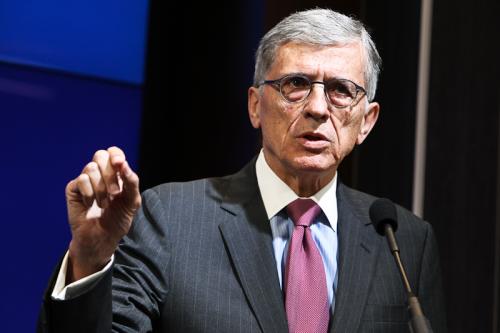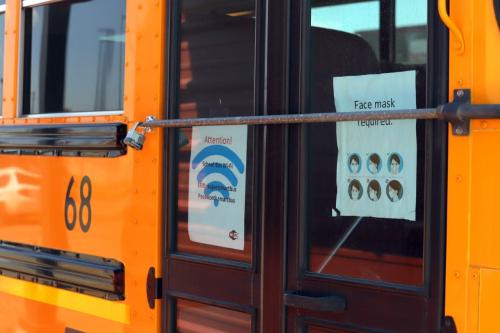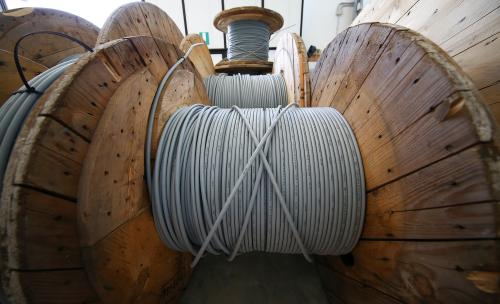Who has access to broadband in America, and who reaps the benefits of broadband competition? Data from a recent FCC study provides insights into both important questions.
First, the importance of access. For the very first time, the Federal Communications Commission concluded in 2015 that the disparity between urban and rural access to broadband provided the basis for direct agency action.
Time has proven that conclusion right – and increasingly important. As my colleague Nicol Turner-Lee recognized immediately after the 2016 election, the Americans who lack access to broadband services – more rural, more middle income, less likely to have attended college – are the same ones who voted for change in economic policies. Indeed, the recent FCC study found that 58 percent of rural Census blocks did not have a “fixed” broadband service provider offering broadband speeds at speeds of 25 megabits per second download/3 Mbps upload or better as of December 31, 2015. 25/3 is scarcely the fastest residential broadband – the same study shows 15.1 percent of fixed broadband connections had downstream speeds of at least 100 Mbps – but it does represent the speeds most recently established by the FCC as the broadband benchmark.
Second, the question of marketplace competition is important as well. The same FCC study examined whether census blocks had multiple (although not necessarily overlapping) fixed broadband providers.
First, only 24 percent of census blocks housed two or more providers of fixed broadband services at the end of 2015. But competitive choices were much less likely in rural America.
As I have explained in an earlier speech and as illustrated by the following charts, 36 percent of urban census blocks had two or more providers at 25/3 or better, but that percentage dropped to only 6 percent in rural America. That means an urban census block was roughly six times more likely than its rural counterpart to offer at least some choice between broadband providers. (Of course, a choice of only two sellers of a good or service would not usually be considered a robust, competitive marketplace.)
Middle and lower-income census blocks and those that with households less likely to have attended college showed a similar, if less dramatic, disparity.
- 36 percent of the highest-income census blocks had some choice, which dropped to 18 percent for both middle and low-income census blocks.
- 30 percent of the census blocks with above median college education had some choice, which dropped to about 16 percent in census blocks with below median college education.
These income and educational results may, of course, be correlated with the disparity between urban and rural access. But that shouldn’t end the inquiry because competition delivers additional, separate results from deployment.
For example, when the FCC looked at the use of municipal broadband (in an order that has since been reversed by an appellate court on legal grounds), it set out evidence showing that the presence of an additional broadband provider pushes down the prices and increases the quality of both new and incumbent providers. In other words, such competition is “win-win.” It benefits those consumers who switch and even those that do not but who gain from faster download speeds resulting from the incumbent’s response to competitive pressures.
In the same order, the FCC found that an incumbent cable company kept its prices flat in one city, even as its prices increased in nearby areas without a comparable broadband choice, and increased its speeds after the arrival of a new broadband entrant. In another city, the incumbent cable company reduced its prices when facing the prospect of a new broadband competitor and increased the top speed of its broadband service from 8 Mbps to 105 Mbps over a five-year period. This is, of course, exactly what standard economics predicts will happen: competition drives prices down, quality up, and innovation forward.
It can be tempting to accept the view that, in an environment of scarce government resources and competing interests, merely ensuring broadband access from a single provider is enough – especially as an improvement on a status quo with little or no access at all. History tells a cautionary tale, though. In 1913, the U.S. Department of Justice settled an antitrust lawsuit against AT&T by essentially accepting AT&T’s monopoly in exchange for the build-out of the nation’s telephone system. AT&T worked hard to uphold its end of the bargain, but it was decades before competitive markets were free to serve consumers, stimulate innovation, and avoid unnecessary regulation.
In other words, as a nation, we should embrace both expanded broadband deployment and expanded broadband competition. Without competition, the pressure from consumers for better and cheaper broadband will naturally ease, and rural America could fall even further behind.







Commentary
Better together: Broadband deployment and broadband competition
March 15, 2017